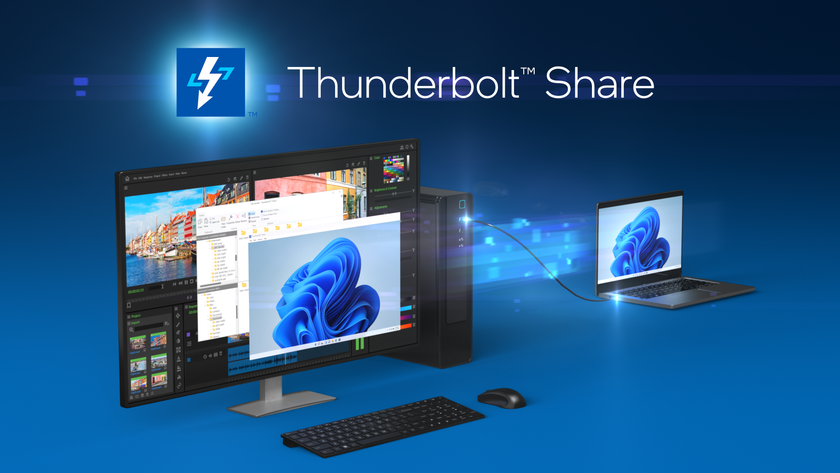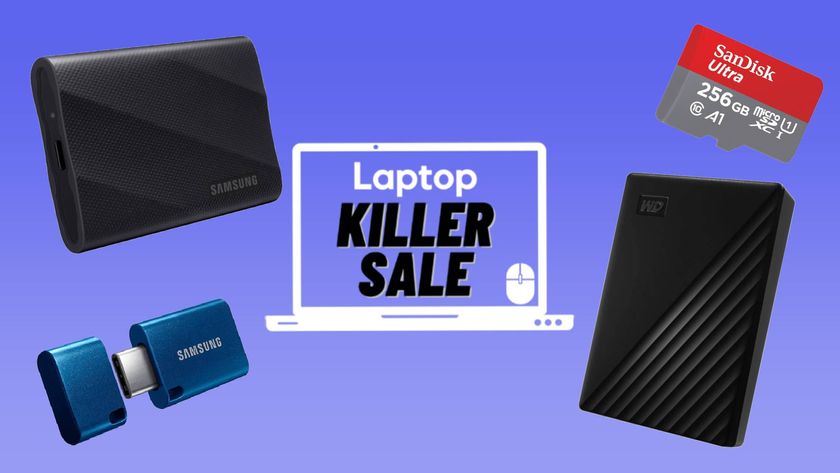7 Ways to Get Started with Microsoft SkyDrive

With SkyDrive and a Windows Phone, you’ll never have to worry about forgetting soda and candy at the grocery store again. In a cheeky television commercial, a pair of kids update their father’s OneNote shopping list from home—adding snacks and other delicious goodies—while the dad runs around a grocery store with his Windows Phone, trying to keep up with the on-the-fly requests. It’s a cute ad that highlights the power of Microsoft’s cloud-based service, but SkyDrive is capable of much, much more than just satisfying a sweet tooth in real time.
What You Need to get Started
Signing up for a free Windows Live account from signup.live.com nets you a SkyDrive account, too. Windows Phone and iPhone users can nab an accompanying SkyDrive app. Sorry, Android users—as of press time, you’ll have to make do with the mobile Web interface, which only displays previously saved SkyDrive files.
Your First Moments
SkyDrive should look awfully familiar to anyone who’s used a computer running Windows 7 or Vista; the file structure is similar to the user folder in those systems, complete with music, pictures and documents folders. SkyDrive comes with a whopping 25GB of storage, although individual files have a 100MB cap. Your used/free data appears in the column on the left side of the screen.
Here's a list of what you can do with SkyDrive.
1. Upload, Download, Delete, or Modify Files
Stay in the know with Laptop Mag
Get our in-depth reviews, helpful tips, great deals, and the biggest news stories delivered to your inbox.

Options running along the top of the screen allow users to create new files, folders and Microsoft Office documents or search for individual files. Delving into folders launches a list of additional options on the right side of the screen, which let you delete, download, modify or share (see below) all the contents of the folder. An Embed option generates HTML code that you can use to embed files in a Web page. Modify individual files by checking the box next to them (or clicking on pictures), then using the right-side options. Documents have additional actions, including the ability to edit the file in Word or in-browser and view the file’s version history.
2. Share Files
SkyDrive is chock-full of ways to share files with other people, all of which are wonderfully simple. The Share option mentioned above includes three sub-choices: Send Email, Post To Services and Get A Link.
The straightforward Send to Email and Get a Link listings allow you to choose whether the shared files can be edited by others. Post to Services doesn’t; it sends nonediting links to more than 30 social media profiles once you’ve connected them to your Windows Live account. (The option will walk you through the connection process if necessary.) Sharing options can be modified or rescinded at any time via the right-hand menu.
Clicking Shared in the left-hand column will display any files or folders others have shared with you.
3. Edit Documents with Microsoft Office Support

The inclusion of basic Microsoft Office functionality is a real feather in SkyDrive’s cap. The Web-based apps don’t offer all the bells and whistles of the full-fledged Office package, but you can use them to whip up basic Word documents, spreadsheets, PowerPoint presentations and OneNote quickly and easily. Best of all, the Web apps are free and open for everyone to use. Documents created online save directly to SkyDrive but can then be downloaded for local use.
Most SkyDrive-saved files can also be edited and saved in the Cloud, no downloading necessary, but be aware that the some file types can’t be edited online, including .rtf files.
4. Simultaneously Collaborate with Others
Another great SkyDrive feature merges the service’s sharing and document editing capabilities; simultaneous collaboration by multiple authors on Excel and Word files. Rather than actively displaying changes as others make them, SkyDrive instead indicates which sections of the document are being altered.

The actual changes appear only on your screen—visually highlighted, too—after all parties save the document. OneNotes can also be edited simultaneously, but in order for Windows Phone users to see the changes, they’ll need to manually sync the note, as open ones don’t sync automatically.
5. Use SkyDrive on your Windows Phone
SkyDrive hooks deeply into Windows Phones. You’re prompted to sign in with a Windows Live ID as soon as you activate a new phone, and images and documents stored in that account’s SkyDrive appear in the phone’s Pictures and Office Hubs, respectively. SkyDrive documents found in the Office Hub can be viewed, downloaded or edited, and newly created documents and spreadsheets can be saved online.
Enabling the “Automatically upload to SkyDrive” option in Settings > Applications > Pictures + Camera will upload all the photos you take directly to the cloud, where they can be accessed normally. You can also choose to upload individual photos to SkyDrive if you don’t want to dive in whole-hog.
The SkyDrive app offers most of the features found in the full-fledged Web version, including the ability to modify folders and download or edit files, plus it lets Windows Phones access SkyDrive-saved files that aren’t documents or pictures. Selecting audio files streams them through your phone. This is a nifty feature, but it’s of limited usefulness since you can listen to a single track at a time only.

6. Use SkyDrive on your iPhone
The iPhone SkyDrive app isn’t quite as full-featured. Modifying folders and uploading photos is supported, but viewing files is mostly a read-only affair—no editing or downloading allowed.
7. Sync Folders on your Laptop to SkyDrive with Windows Live Mesh
Unlike iCloud, SkyDrive won’t automatically upload new media added to your PC, but you can sync up to 5GB worth of folders using Windows Live Mesh, a program included as part of the Windows Live Essentials pack. Any changes made in those folders will sync in a SkyDrive-stored mirror of the folders. Internet Explorer bookmarks and Office templates can also be synced. Even better, synced files don’t count toward your 25GB total; it’s a separate 5GB entirely. Click the View Synced Files option at the top of your SkyDrive homepage to see your Live Mesh data. Synced files are not viewable on mobile devices, however.
So, Is SkyDrive Worth It?
Twenty-five GB of free cloud storage is hard to beat, and the productivity-friendly features make SkyDrive a pretty potent service that could be especially valuable for businessmen and students. Another tidbit worth noting is that SkyDrive will come baked into the upcoming Windows 8 operating system, adding even more usefulness to Microsoft’s cloud service. SkyDrive’s only major flaw is the lack of any Xbox Live integration.



